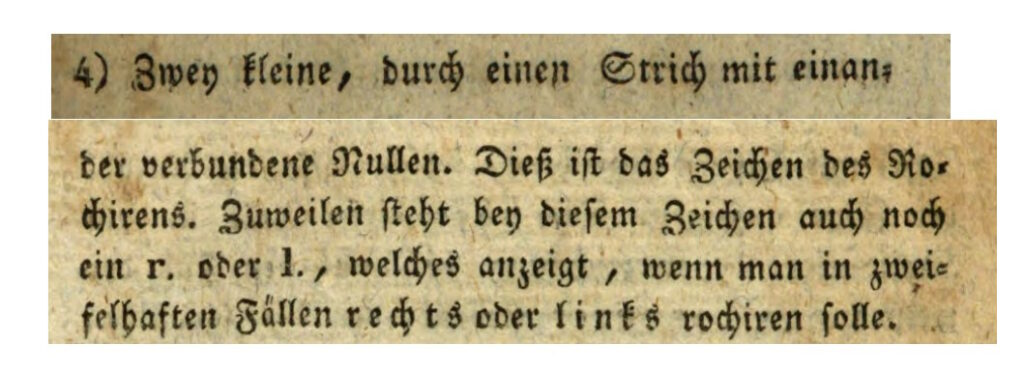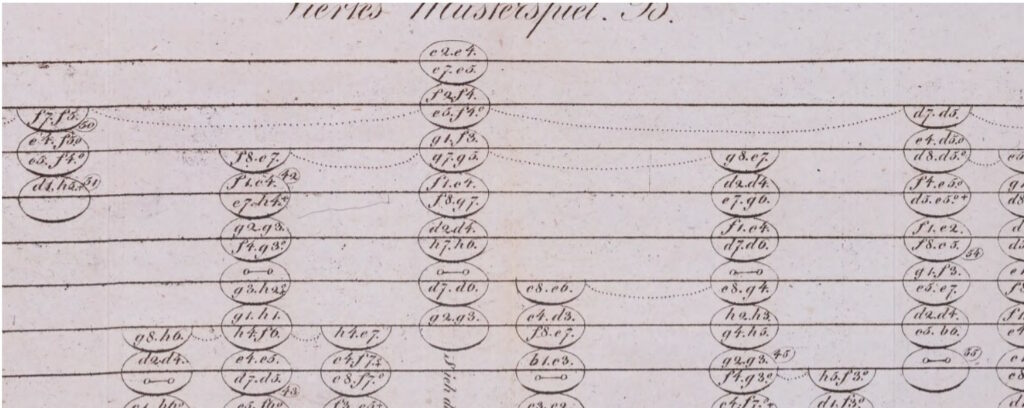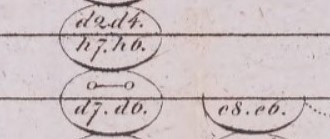Last updated on 2023-12-04
In 1837, Aaron Alexandre published a book entitled Encyclopédie des échecs.
This book was really an ancestor of the Encyclopaedia of Chess Openings, which will be published from 1974 (https://en.wikipedia.org/wiki/Encyclopaedia_of_Chess_Openings).
As Aleksandar Matanović will do in the 1974 encyclopedia, Aaron Alexandre intended to make the Encyclopédie des échecs international by writing an introduction in French, English, German and Italian:

After the introduction, explanations on the notations are given again in the four languages:

The symbols o-o and o-o-o are used for castling kingside and queenside (from the size of the lettres, Alexandre seems to use little “o” in this notation.
For a long time, I thought that Aaron Alexander invented this castling notation.
It seems however that Johann Allgaier was the first to use 0-0 for castling. He published in 1795 a book entitled Neue theoretisch-praktische Anweisung zum Schachspiel (first volume available online here: https://www.digitale-sammlungen.de/view/bsb10431500?page=44,45 or here: https://books.google.fr/books?id=OvgWAAAAYAAJ, the second volume is available here: https://books.google.com.do/books?id=Q_gWAAAAYAAJ)
In this book, Allgaier uses an algebric like notation but without any particular symbol for castling:

However, in the 1811 edition (the best version I found online is here: https://onb.digital/result/10A39F1B), pages 11-12, one finds:

which says:
Zwei kleine, durch einen Strich miteinander verbundene Nullen. Dies ist das Zeichen des Rochierens. Zuweilen steht bei diesem Zeichen auch noch ein r. oder l., welches anzeigt, wenn man in zweifelhaften Fällen rechts oder links rochiren solen.
Two small zeros connected by a dash. This is the sign of castling. Sometimes there is also a r. or l. next to this sign, which indicates if you should castle right or left in doubtful cases.
This notation is then used at the end of the book in tables like the following one:

Conclusion
Aaron Alexander was thus definitely not the first to use the O-O sign for castling, but he may have invented the O-O-O sign for queenside castling.


Be First to Comment